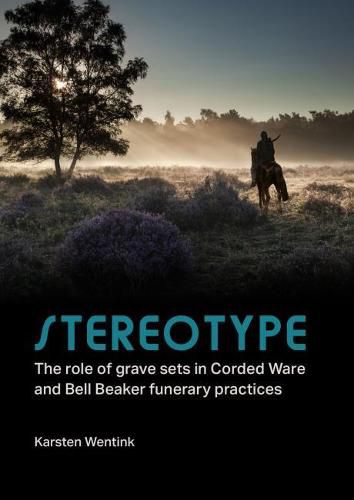Readings Newsletter
Become a Readings Member to make your shopping experience even easier.
Sign in or sign up for free!
You’re not far away from qualifying for FREE standard shipping within Australia
You’ve qualified for FREE standard shipping within Australia
The cart is loading…






Throughout northern Europe, thousands of burial mounds were erected in the third millennium BCE. Starting in the Corded Ware culture, individual people were being buried underneath these mounds, often equipped with an almost rigid set of grave goods. This practice continued in the second half of the third millennium BCE with the start of the Bell Beaker phenomenon. In large parts of Europe, a ‘typical’ set of objects was placed in graves, known as the ‘Bell Beaker package’.
This book focusses on the significance and meaning of these Late Neolithic graves. Why were people buried in a seemingly standardized manner, what did this signify and what does this reveal about these individuals, their role in society, their cultural identity and the people that buried them?
By performing in-depth analyses of all the individual grave goods from Dutch graves, which includes use-wear analysis and experiments, the biography of grave goods is explored. How were they made, used and discarded? Subsequently the nature of these graves themselves are explored as contexts of deposition, and how these are part of a much wider ‘sacrificial landscape’.
A novel and comprehensive interpretation is presented that shows how the objects from graves were connected with travel, drinking ceremonies and maintaining long-distance relationships.
$9.00 standard shipping within Australia
FREE standard shipping within Australia for orders over $100.00
Express & International shipping calculated at checkout
Throughout northern Europe, thousands of burial mounds were erected in the third millennium BCE. Starting in the Corded Ware culture, individual people were being buried underneath these mounds, often equipped with an almost rigid set of grave goods. This practice continued in the second half of the third millennium BCE with the start of the Bell Beaker phenomenon. In large parts of Europe, a ‘typical’ set of objects was placed in graves, known as the ‘Bell Beaker package’.
This book focusses on the significance and meaning of these Late Neolithic graves. Why were people buried in a seemingly standardized manner, what did this signify and what does this reveal about these individuals, their role in society, their cultural identity and the people that buried them?
By performing in-depth analyses of all the individual grave goods from Dutch graves, which includes use-wear analysis and experiments, the biography of grave goods is explored. How were they made, used and discarded? Subsequently the nature of these graves themselves are explored as contexts of deposition, and how these are part of a much wider ‘sacrificial landscape’.
A novel and comprehensive interpretation is presented that shows how the objects from graves were connected with travel, drinking ceremonies and maintaining long-distance relationships.